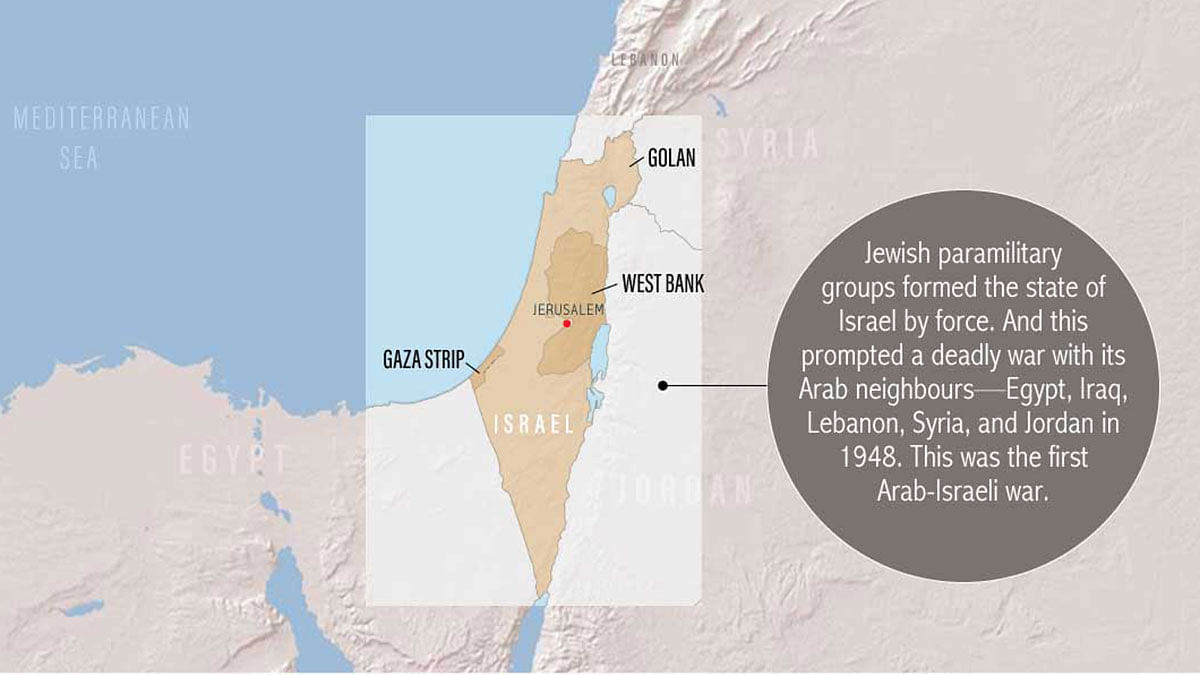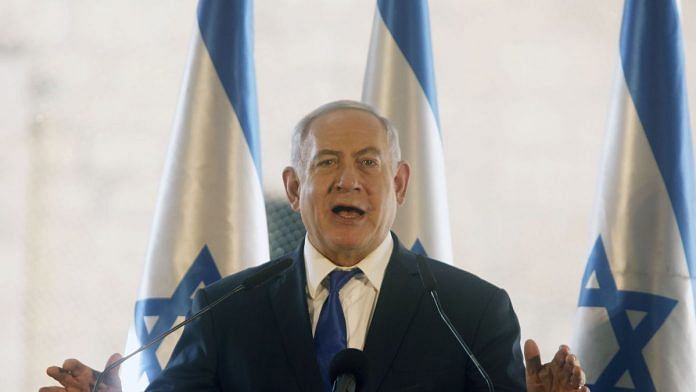New Delhi: US President Donald Trump Monday announced that America no longer considered Israeli settlements in the West Bank to be in violation of international law.
It is a 180-degree turn in how US’ foreign policy has usually viewed the 70-year conflict between Israel and Palestine. While it had earlier concluded that Israeli settlements in West Bank were “illegitimate”, the Trump administration’s decision is more accommodative of Israel’s interests.
The West Bank and the Gaza Strip are territories that have been under Israel’s occupation since 1967. A look at the issues surrounding the two regions.
West Bank & Gaza Strip
The West Bank is located to the west of the Jordan River. It is a landlocked territory, bordered by Jordan to the east and Israel to the south, west and north.
The Gaza Strip, on the other hand, is a small boot-shaped territory along the Mediterranean coast between Egypt and Israel.

Creation of Israel and Palestine
After World War I, both West Bank and the Gaza Strip became part of British-mandated Palestine. But by the end of Word War II, there was a strong demand from Jews fleeing Nazi Europe for a homeland within Palestine, an Arab-dominated region.
It also had to do with Jerusalem, considered a holy city by the Jews, which was inside the British-mandated Palestine. Jerusalem has been at the centre of a religious dispute between the Arabs and Jews for centuries.
When the British mandate ended in 1947, the United Nations (UN) proposed an Arab-Jewish partition of Palestine — between Palestine and the new state of Israel. This partition plan mandated 53 per cent of the land to the Jewish-majority state (Israel) and 47 per cent to the Palestinian-majority state (Palestine).
But the idea of creating a new-Jewish majority state didn’t bode well for the Arab countries in the Middle East.
Jewish paramilitary groups, however, formed the state of Israel by force in 1948. This prompted a deadly war with its Arab neighbours — Egypt, Iraq, Lebanon, Syria, and Jordan in 1948. This was the first Arab-Israeli war.
Israel won this war and ended up occupying more land than previously envisaged in the 1947 UN partition plan.
By the end of the war in 1949, Israel had taken up 78 per cent of the historical Palestine. Palestinian territory shrank to 22 per cent of what it had earlier been. Meanwhile, the West Bank and East Jerusalem came under Jordan’s rule while West Jerusalem to Israel. The Gaza Strip was under Egyptian military rule after the 1949 war.
Six-Day War of 1967
In 1967, the Arab countries again refused to recognise Israel as a state, which led to another war — known as the Six-Day War.
Israel won this war too and occupied even more parts of Palestine. The West Bank, the Gaza Strip and East Jerusalem — which houses the holy Old City — came under Israel’s control. It also occupied Syrian Golan Heights and Egypt’s Sinai Peninsula.
With the exception of the Sinai Peninsula, all other parts remain occupied by Israel till date. Since 1967, a large part of the Palestinian population had been living under Israeli-occupied territories in both West Bank and the Gaza Strip.
Also, post-1967, Israel started to build settlements for its Jewish community in the newly-occupied Palestinian territories, including in the West Bank and Gaza Strip.
“Settlements have become the hallmark of the Israeli colonial project in Palestine. In the last 50 years, the Israeli government has transferred between 600,000 and 750,000 Jewish Israelis to the West Bank and East Jerusalem. They live in at least 160 settlements and outposts,” a report noted.
Where things stand now
Both the West Bank and Gaza Strip are home to a large number of Palestinian populations.
Following the Oslo Accords between the Israeli government and the Palestine Liberation Organization (PLO) during the 1990s, part of the West Bank came under the control of the Palestinian Authority. With varying levels of autonomy, the Palestinian Authority controls close to 40 per cent of West Bank today, while the rest is controlled by Israel.
It is in West Bank that 160-odd Israeli settlements and outposts now exist.
The Gaza Strip, densely populated with Palestinians, had been under Israeli occupation since 1967, until Israel decided to “disengage” from the territory in 2005. A couple of years later in 2007, Hamas, an anti-Israel military group, took over Gaza Strip. The militia group is often involved in violent clashes with the Israeli Defence Forces.
While Palestine has staked claim to both territories — West Bank and Gaza Strip — Israel’s objective has been to keep expanding Jewish settlements in these regions. There are approximately 2 million Palestinians in the Gaza Strip and 3 million in the West Bank, according to the Palestinian Authority’s Population Registry.
The Israeli Civil Administration has, nevertheless, accused the Palestinian registry of inflating these figures.
Large Israeli neighbourhoods have also sprung up in East Jerusalem. “This means that roughly 11 per cent of Israel’s 6.6 million Jewish population now lives on occupied land, outside the internationally recognised borders of Israel (pre-1967),” the report mentioned above added.
Both Israel and the Palestinian authority have staked claim over Jerusalem as their capital city. But the international community has broadly rejected both claims and argues that the matter should be resolved through peaceful negotiations.
Also read: ‘Ideological cure’ for Uyghurs, ‘no mercy’ — what leaked papers reveal about Xinjiang camps




Pathetic arrangements of facts by pathetic online media agency
This is misleading. You state that the Jews were given 53% of the land in the UN partition – which is correct but what you don’t specify is that much of that 53% was uncultivated coastline, marshland that had to be drained, and inhospitable desert. The Negev actually takes up 55% of Israel today – although now it has been cultivated and turned into agricultural land.